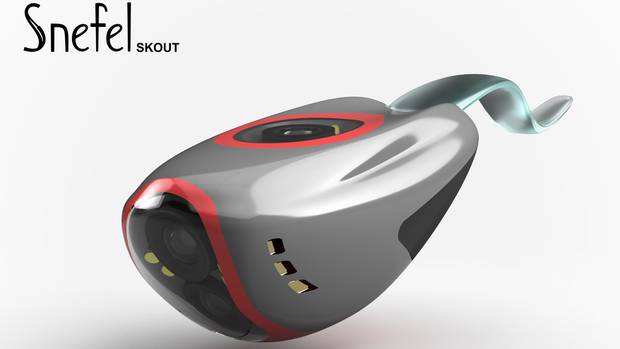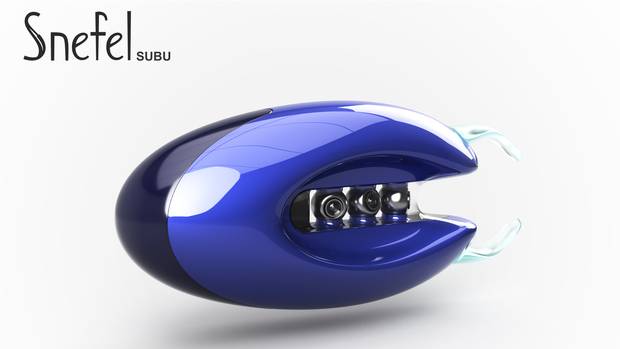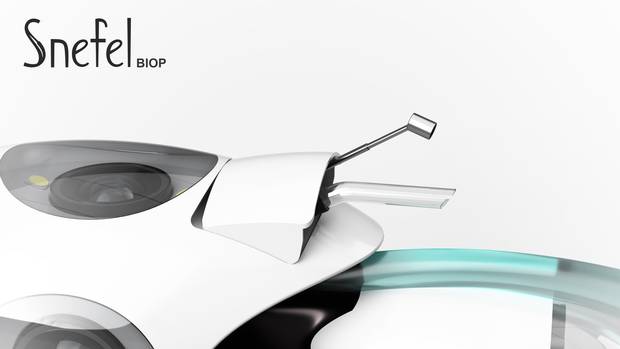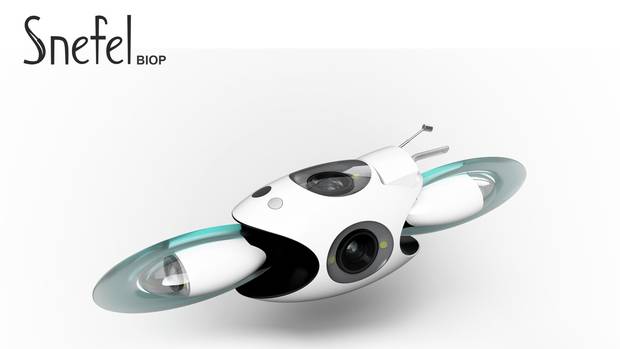The Concept
The Snefel is a set of three micro-robots designed as super-mini medical vehicles. They patrol human blood vessels to provide better vision when operating, to cure locally, and to detect future problems. The different types of robots are the Biop, Skout, and Subu.
The Context

The Snefel Skout could contain a small dose of medicine to treat issues locally.
With virtual reality making its way into all fields, I started thinking about microscopic vehicles that humans could drive in various environments. The first one we designed was the Antro, a small robot mounted on Segway wheels.
Then we wondered about machines that were even smaller – microscopic – that doctors could literally drive inside your body. How might these look?
How It Works

The Subu is designed to repair blood vessels, dig through clots and collect and analyze samples.
Snefel robots are made for the human body. They would have special proteins, specific to an individual, which would mirror those of red blood cells. This would give them immunity against white blood cells, which would otherwise consider them a menace to the body and destroy them. It would also reduce the possibility of rejection.
The size of the robots would be the same as white blood cells (12 to 15 micrometres). In comparison, a human hair can measure between 17 micrometres and 180 micrometres in diameter. The reason for the small size is the fact that they have to be able to go anywhere in the body – and most importantly, never block a blood vessel.
The Biop is a miniature virtual-reality camera robot. To optimize image quality, its minuscule camera could use a magnifying lens to capture and build a three-dimensional perspective around the robot. Doctors would use it to see during procedures such as the transference of an embryo during artificial insemination. Being able to see will make surgeries easier, faster and more successful.

The Biop could provide a 360-degree view around the device.
The Skout is a small delivery robot. Because of its shape, it could contain a small dose of medicine to treat issues locally. Its tail-like propulsion systems – consisting of a membrane that could contract itself when an electric current passes through – would help it reach its destination.
Treating locally means that to achieve the same results, the quantity of medicine required is drastically reduced. The Skout could, for example, carry a dose of medicine and conduct a thrombolysis: a treatment to break down blood clots. The Skout could have a frame made from the medicine it has to deliver, meaning that it could lodge itself in the clot and slowly degrade as it releases the medicine.
The Subu is the final robot; its job is to repair blood vessels, dig through clots, collect blood samples and analyze them, providing day-to-day updates. The Subu would be perfect for hemophiliacs, diabetics or people at risk for blood clots.
Many Subus would patrol within the body, and when a problem is detected, they would be able to either fix it or call for help. For example, when a Subu detects an open [internal] wound, it could summon its linked robots in the body to bunch together to slow down the bleeding after sending an alert to emergency services.
The Industrial Designer
Snefel renderings were designed and produced by Bing Xiao Liu, an industrial designer based in Montreal. Xiao Liu studied at the University of Montreal, and also designed the Upekzit bus concept and the Bitatibi snowmobile.
